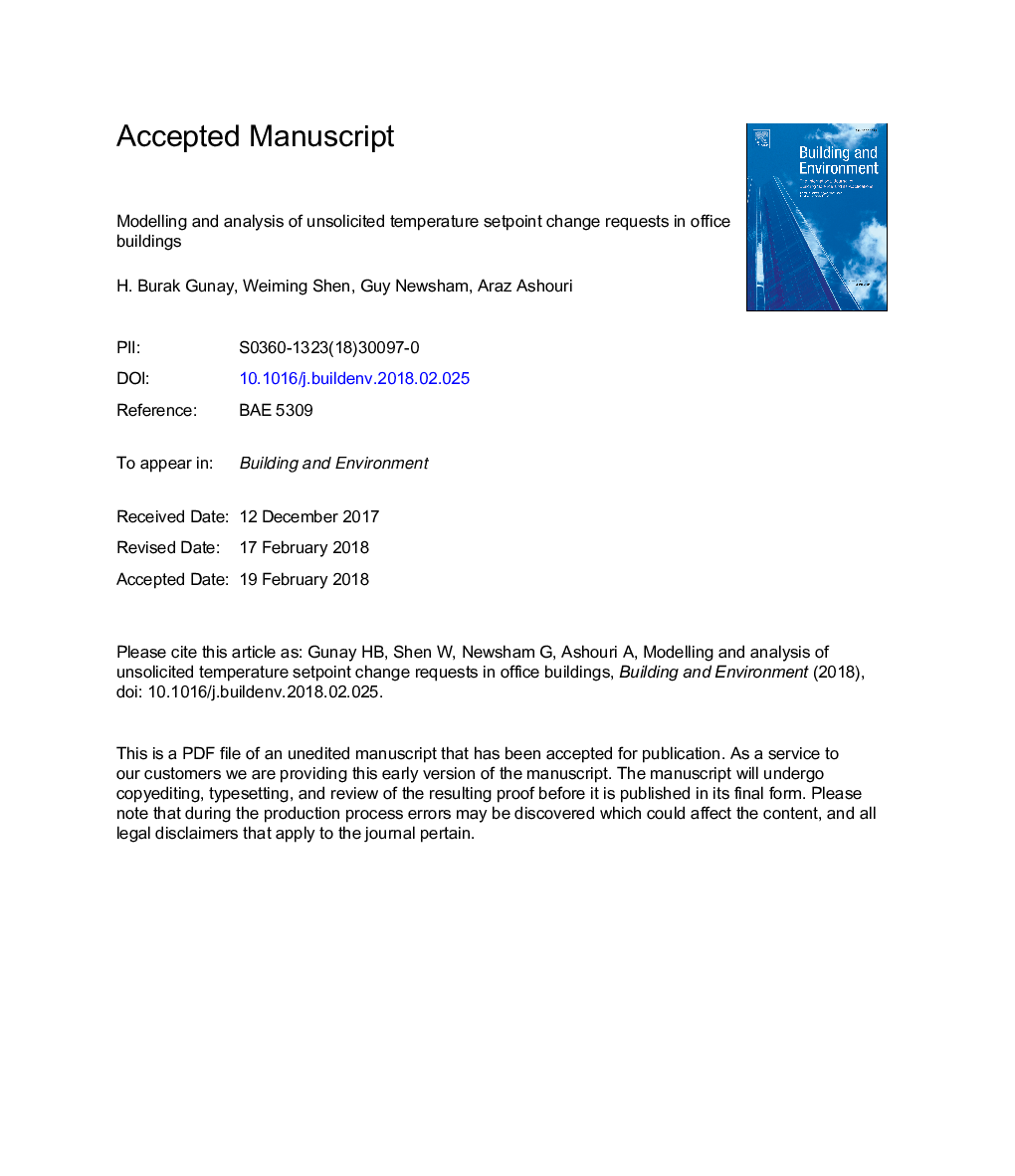| Article ID | Journal | Published Year | Pages | File Type |
|---|---|---|---|---|
| 6697905 | Building and Environment | 2018 | 24 Pages |
Abstract
This paper presents an analysis conducted upon custom temperature setpoint change request data collected from four large office buildings. In three of these buildings, the setpoint changes were executed upon hot and cold complaints; and in the fourth building, the occupants could adjust their setpoints through their thermostats. Using concurrent indoor and outdoor temperature records, multivariate logistic regression models predicting the frequency of custom setpoint change requests were developed. The indoor temperatures that minimize the frequency of thermal complaints or thermostat overrides were determined with these models. It is argued that these temperatures can be used to select building specific default seasonal temperature setpoints. The results indicate that the majority of the setpoint change requests were either to increase the default 22â¯Â°C temperature setpoints during the cooling season or to decrease them during the heating season. Custom setpoint change requests were registered 24 times more frequently when occupants were permitted to make temporary thermostat overrides. It was also identified that the operators tend to make greater setpoint changes upon hot and cold complaints than the occupants make through their thermostat overrides.
Keywords
Related Topics
Physical Sciences and Engineering
Energy
Renewable Energy, Sustainability and the Environment
Authors
H. Burak Gunay, Weiming Shen, Guy Newsham, Araz Ashouri,
